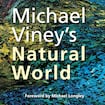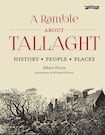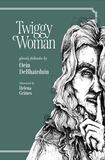
Michael Viney, the late Irish Times journalist, film-maker and natural-history author, describes himself as a romantic at heart. If so, his “soul-landscape” of Thallabawn, the part of Co Mayo where he spent the latter half of his life, was more than just a passing crush. It was from here that the writer wrote and illustrated his beloved communiques from the west for this newspaper, and it is here that this retrospective, composed just before his death, earlier this year, takes place, among a “mortuary of fascinating flotsam”, “tough quartzite ridges” and “sphagnum moss”. For Viney, language meets at the confluence of science and poetry. At this same intersection we find his meticulous illustrations. With an introduction by the poet Michael Longley, Viney achieves the near impossible in translating the ethereal beauty of his homeland to the page. Ar dheis Dé go raibh a anam dílis. Brigid O’Dea

Towards the end of the 20th century the once tiny village of Tallaght, in Dublin’s foothills, changed dramatically with modernisation and a population explosion to more than 80,000 people. In 13 illuminating chapters, Albert Perris presents the narrative sweep behind this ancient place mentioned in legend in the Book of Invasions. Readers are taken through early Christian monastic settlements, castles and big houses to the arrival of the Dominican priests in 1855. The curious story of what Charles Dickens made of the Battle of Tallaght is recounted. The author considers periods of strife but also spotlights transport, industry, commercial vicissitudes and the coming of age of Tallaght new town. This attractive work is accompanied by period photographs and by Michael O’Brien’s original drawings, all complemented with an elegant ribbon bookmark. Paul Clements

In an introduction to this book, Oein DeBhairduin extends a message to the people who shared with him their stories: “I hope I do you justice.” The note seems conspicuous in a book of ghost stories that addresses the eternal human conflict between justice and vengeance. In this collection DeBhairduin draws on the oral tradition of storytelling from the Mincéirí, or Irish Travelling community, in a retelling of chilling folklore. The prolific author explores the forces that live within the silence of our psyche and the world around us and the innate human desire to excavate these darker realms. DeBhairduin’s prose is, as always, elegant and atmospheric, complemented beautifully by the accompanying illustrative work of Helena Grimes. BO’D









